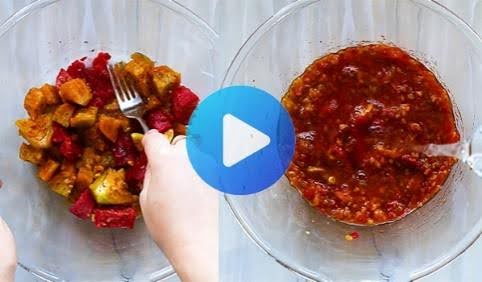Feeling puffed up and uncomfortable is something many of us deal with. That annoying belly bloat can really put a damper on your day, making clothes feel tight and just leaving you feeling blah. As someone who works closely with women on their health and fitness goals, I hear about bloating a lot. It’s a common complaint, and it can stem from so many different things, from what we eat to how stressed we are. The good news is, you don’t have to just live with it. There are gentle, natural ways to help your digestive system feel happier, and one of my favorite tools is the humble smoothie.
Now, I know what you might be thinking. Aren’t smoothies sometimes blamed for bloating. It’s true that some smoothies, packed with sugary fruits or ingredients that don’t agree with you, can cause issues. But when made thoughtfully, with the right ingredients, smoothies can be a fantastic way to soothe your tummy, improve digestion, and work towards that flatter stomach feeling we all appreciate. It’s about choosing ingredients that work with your body, not against it.
Understanding Bloating: More Than Just Air
Before we dive into the smoothie solutions, let’s quickly understand what’s usually going on when we feel bloated. It’s often a buildup of gas in your digestive tract, or it could be related to water retention. Sometimes it’s constipation playing a role, making everything feel slow and backed up.
Common triggers include:
- Eating too fast: Gulping down food means you swallow more air.
- Certain foods: Beans, lentils, broccoli, cabbage, onions, carbonated drinks, and artificial sweeteners are well-known culprits for some people. Dairy can also be an issue if you’re lactose intolerant.
- Food sensitivities: Beyond common triggers, you might have specific sensitivities (like gluten or certain FODMAPs) that cause inflammation and bloating.
- Constipation: When things aren’t moving through smoothly, gas can get trapped, leading to bloating.
- Hormonal changes: Many women experience bloating related to their menstrual cycle. Fluid retention is common during certain phases.
- Stress: Your gut and brain are closely linked. Stress can mess with digestion, slowing it down or speeding it up, often leading to discomfort and bloating.
- Gut health imbalance: An imbalance in your gut bacteria (dysbiosis) can lead to increased gas production.
Identifying your personal triggers is key, but incorporating gut-friendly foods and habits can make a big difference for almost everyone.
Why Smoothies Can Be Your Anti-Bloat Ally
Smoothies offer a unique advantage when it comes to digestion. Blending essentially pre-digests the food for you. It breaks down the tough fibers in fruits and vegetables, making their nutrients easier for your body to absorb and potentially reducing the amount of work your digestive system has to do.
Here’s how the right smoothie helps:
- Hydration: Smoothies typically have a liquid base (water, coconut water, unsweetened almond milk), contributing to your daily fluid intake. Proper hydration is crucial for keeping digestion moving and preventing constipation-related bloating. Dehydration can actually cause your body to hold onto water, leading to puffiness.
- Fiber Power (The Right Kind): While too much of certain fibers at once can cause bloating, smoothies allow you to incorporate soluble fiber sources easily. Soluble fiber dissolves in water, forming a gel-like substance that aids smooth digestion. Think oats, chia seeds, flax seeds, and fruits like berries and bananas. Blending helps make even insoluble fiber (found in leafy greens and veggie skins) a bit easier to handle.
- Nutrient Delivery: You can pack a ton of vitamins, minerals, and antioxidants into one glass. These nutrients support overall health, including the health of your digestive system.
- Targeted Ingredients: This is where the magic happens. You can specifically choose ingredients known for their digestive benefits and anti-inflammatory properties.
Building the Perfect De-Bloating Smoothie
Creating a smoothie to combat bloating isn’t about randomly throwing things in a blender. It’s about strategic choices.
Choose Your Liquid Base Wisely
- Water: The simplest, calorie-free hydrator.
- Coconut Water: Excellent source of electrolytes like potassium, which helps balance sodium levels and can reduce water retention. Choose unsweetened varieties.
- Unsweetened Almond or Cashew Milk: Low in calories and generally easy to digest for most people. Check for carrageenan-free options if you suspect sensitivity.
- Kefir or Plain Yogurt: These provide probiotics, the beneficial bacteria that support a healthy gut microbiome. A balanced gut is less prone to excessive gas production. Start with small amounts if you’re not used to them. Choose plain, unsweetened versions.
- Herbal Teas (Cooled): Peppermint, ginger, or fennel tea can be brewed, cooled, and used as a base for extra digestive soothing.
Pick Produce That Pacifies
Certain fruits and vegetables are renowned for their ability to ease digestive distress.
- Pineapple: Contains bromelain, an enzyme that aids protein digestion.
- Papaya: Contains papain, another protein-digesting enzyme.
- Banana: Rich in potassium (helps with fluid balance) and prebiotic fiber, which feeds good gut bacteria. Ripe bananas are generally easier to digest.
- Berries (Blueberries, Raspberries, Strawberries): Lower in sugar than some other fruits, high in antioxidants and fiber.
- Cucumber: High water content for hydration and naturally cooling.
- Celery: Another high-water veggie, known for its potential diuretic effect to reduce water retention.
- Spinach and Mild Greens: Packed with nutrients without being overly fibrous or gas-producing like kale can sometimes be for sensitive individuals. Start small and see how you feel.
- Avocado: Provides healthy fats and fiber, promoting satiety and smooth digestion. Use in moderation (about 1/4 per smoothie) due to its calorie density.
Power Up with Digestive Boosters
- Ginger: A superstar for digestion. It helps soothe the digestive tract, reduce nausea, and can help speed up stomach emptying. Fresh ginger root is best.
- Mint: Known to relax the muscles of the digestive tract, potentially easing cramps and bloating.
- Fennel Seeds: Traditionally used to relieve gas and bloating. You can add a small pinch to your smoothie (they have a licorice flavor).
- Chia Seeds or Flax Seeds: Excellent sources of soluble fiber. They absorb water and form a gel, aiding regularity. Start with a teaspoon and increase gradually, ensuring adequate fluid intake. Make sure flax seeds are ground for better nutrient absorption.
- Psyllium Husk: A potent source of soluble fiber, very effective for regularity. Start with a very small amount (like 1/2 teaspoon) and drink plenty of water throughout the day.
- Lemon Juice: Can stimulate digestive juices. A small squeeze adds brightness and potential digestive benefits.
Protein and Healthy Fats (Optional but Beneficial)
Adding protein and healthy fats makes your smoothie more satisfying and helps stabilize blood sugar.
- Plain Protein Powder: Choose one that you tolerate well. Whey isolate, collagen peptides, or a simple plant-based option (like pea or brown rice, avoiding blends with added gums or sweeteners if sensitive) can work.
- Nut Butter (Almond, Peanut): Adds creaminess, protein, and fat. Stick to a tablespoon or so. Choose natural varieties without added sugar or oils.
What to Limit or Avoid in Anti-Bloat Smoothies
- Excessive Fruit Sugar: While fruit is healthy, too much fructose at once can cause bloating for some. Balance fruits with greens, fats, and protein. Avoid fruit juices as your base.
- Dairy (if sensitive): If you suspect lactose intolerance, skip the regular yogurt or milk.
- Artificial Sweeteners and Sugar Alcohols: These (like sorbitol, xylitol) are notorious for causing gas and bloating.
- Too Much Fiber Too Soon: If you’re not used to a high-fiber diet, introduce fiber-rich ingredients like chia, flax, or psyllium gradually.
- Gassy Vegetables: While healthy, you might want to skip raw broccoli, cauliflower, or large amounts of kale in your anti-bloat smoothie, at least initially. Cooked versions are often better tolerated.
- Processed Add-ins: Skip sugary syrups, ice cream, or sweetened yogurts.
Sample De-Bloating Smoothie Recipes
Here are a few ideas to get you started. Feel free to adjust based on your preferences and what you have on hand. Remember to use unsweetened ingredients where applicable.
1. The Tropical Tummy Soother
- 1 cup coconut water
- 1/2 cup frozen pineapple chunks
- 1/2 cup frozen papaya chunks (or mango)
- 1/2 ripe banana (frozen for extra creaminess)
- 1/2 inch fresh ginger root, peeled
- 1 tablespoon chia seeds
- Optional: Handful of spinach
Why it works: Coconut water hydrates, pineapple and papaya provide digestive enzymes, banana offers potassium and prebiotics, ginger soothes, chia adds soluble fiber, spinach adds nutrients without strong flavor.
You Might Be Interested In: Learning more about The Complete Smoothie Detox & Weight Loss Program
2. Green Ginger Refresher
- 1 cup water or cooled peppermint tea
- 1 cup spinach
- 1/2 cucumber, chopped
- 1/4 avocado
- 1/2 inch fresh ginger root, peeled
- Juice of 1/2 lemon
- Small handful of fresh mint leaves
- Optional: 1 scoop plain collagen peptides or protein powder
Why it works: Hydrating base, gentle greens, cucumber and lemon offer hydration and potential de-puffing, avocado provides healthy fats, ginger and mint are digestive powerhouses.
3. Berry Probiotic Bliss
- 1 cup plain kefir or unsweetened almond milk
- 1/2 cup mixed berries (frozen)
- 1/4 cup rolled oats (uncooked)
- 1 tablespoon ground flaxseed
- Optional: 1/4 teaspoon cinnamon (can help with blood sugar balance)
Why it works: Kefir provides probiotics, berries offer antioxidants and fiber, oats and flax provide soluble fiber for regularity.
4. Pineapple Fennel Fix
- 1 cup water
- 1 cup frozen pineapple chunks
- 1 stalk celery, chopped
- 1/4 teaspoon fennel seeds (start small)
- Juice of 1/4 lime
- Optional: Handful of mild lettuce like romaine
Why it works: Water hydrates, pineapple aids digestion, celery has high water content, fennel specifically targets gas, lime adds brightness.
Blending Tips:
- Add liquids first, then soft ingredients, then frozen items and powders.
- Blend until very smooth to ensure fibers are well broken down.
- If using seeds like chia or flax, you can let the smoothie sit for 5-10 minutes to allow them to gel slightly.
Beyond the Blender: Lifestyle Habits for a Flatter Tummy
Smoothies are a great tool, but they work best as part of a broader approach to digestive health.
- Chew Your Food Well: Even though smoothies are blended, remember to chew your solid meals thoroughly. Digestion starts in the mouth.
- Eat Mindfully: Slow down, savor your food, and avoid eating when stressed or rushed. This helps prevent swallowing excess air.
- Stay Hydrated: Drink plenty of plain water throughout the day, not just in your smoothies.
- Identify Trigger Foods: Keep a food diary to pinpoint specific foods that consistently cause you bloating. Common culprits vary greatly from person to person.
- Manage Stress: Incorporate stress-reducing activities like deep breathing, meditation, yoga, or spending time in nature. Chronic stress significantly impacts gut health.
- Move Your Body: Regular physical activity, even gentle walking, helps stimulate bowel movements and can reduce bloating. Certain yoga poses (like twists or wind-relieving pose) can also be helpful. Aim for consistency rather than intense, sporadic workouts, especially if intense exercise sometimes triggers digestive upset for you.
- Consider Probiotics: Beyond yogurt or kefir, a probiotic supplement might be beneficial, but it’s often best to discuss specific strains with a healthcare provider.
- Prioritize Sleep: Lack of sleep can disrupt hormones and increase stress, both of which can affect digestion. Aim for 7-9 hours of quality sleep per night.
- Look at Meal Timing: Eating large meals late at night can sometimes lead to discomfort. Try to have your last big meal a few hours before bed.
Exercise and Your Digestive System
Movement plays a vital role in keeping your digestive system happy. Exercise helps stimulate peristalsis, the wave-like muscle contractions that move food through your intestines. This can prevent constipation and the trapped gas that often comes with it.
- Walking: One of the simplest and most effective forms of exercise for digestion. Aim for a brisk walk after meals if possible.
- Yoga: Many yoga poses involve gentle twisting and compression of the abdominal organs, which can aid digestion and relieve gas. Poses like Cat-Cow, Supine Spinal Twist, and Apanasana (Wind-Relieving Pose) are excellent choices.
- Cycling: A low-impact aerobic activity that gets your blood flowing and can help stimulate bowel function.
- Swimming: Gentle on the joints and provides a good cardiovascular workout that supports overall gut health.
While moderate exercise is beneficial, very intense exercise can sometimes temporarily divert blood flow away from the digestive system, potentially causing issues for some people, especially if done right after eating. Listen to your body and find activities that feel good and support, rather than hinder, your digestion.
Female Hormones and Bloating
It’s important to acknowledge that for women, bloating isn’t always just about food or digestion mechanics. Hormonal fluctuations throughout the menstrual cycle play a significant role. Leading up to menstruation, changes in estrogen and progesterone levels can cause the body to retain more water and salt, leading to that familiar pre-period puffiness. Progesterone can also slow down digestion slightly, contributing to constipation and gas.
While you can’t stop your natural hormonal cycles, managing the other factors – hydration, diet, stress, exercise – can help minimize hormonally-driven bloating. Ensuring adequate intake of magnesium and potassium (found in leafy greens, nuts, seeds, bananas, avocados – many great smoothie ingredients) can sometimes help with fluid balance. If bloating related to your cycle is severe or persistent, it’s always a good idea to chat with your doctor.
Making Smoothies a Sustainable Habit
The key to seeing results is consistency. Try incorporating an anti-bloat smoothie into your routine most days, perhaps as breakfast or a mid-day snack. Prep ingredients ahead of time – wash and chop fruits/veggies, portion out seeds or powders into small containers – to make morning blending quick and easy.
Listen to your body. If a particular ingredient doesn’t sit well with you, swap it out. The recipes above are just templates; personalize them to your taste and tolerance. Over time, you’ll likely notice not just less bloating, but potentially more energy and better overall digestive wellness. Breaking up with bloating is possible, and a delicious, nutrient-packed smoothie can be a wonderful partner in that journey.
Related YouTube Video
Final Thoughts
Dealing with bloating can be frustrating, but remember that small, consistent changes can lead to big improvements. Using smoothies strategically is a fantastic way to increase your intake of hydrating fluids, digestive enzymes, soothing herbs like ginger, and the right kinds of fiber. Combine this with mindful eating habits, regular movement that you enjoy, stress management techniques, and adequate sleep. Pay attention to how your body responds to different foods and lifestyle adjustments. It’s a journey of discovering what works best for your unique system. Be patient and kind to yourself as you work towards a happier, less bloated tummy.







